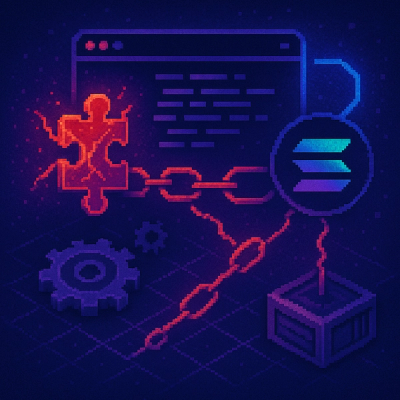
Getting Started
const API = require('@metrichor/epi2me-api');
const EPI2ME = new API({
url: 'custom EPI2ME host' || 'https://epi2me.nanoporetech.com',
apikey: '<your api key>',
apisecret: '<your api secret>',
inputFolder: '<folder path for files to upload>',
outputFolder: '<folder path for files to download>',
});
const workflows = await EPI2ME.REST.workflows();
const workflow = await EPI2ME.REST.workflow(workflow_id);
const instance = await EPI2ME.startWorkflow({...});
const response = await EPI2ME.stopEverything();
await EPI2ME.stop_everything();
See also the examples/ folder
Constructor options:
{
agent_version
agent_address // Geo location and ip
apikey
apisecret
proxy
url
user_agent
region
retention
telemetryCb
dataCb
sessionGrace
remoteShutdownCb // callback for remote shutdown of
awsAcceleration // Use AWS Acceleration - boosts download / upload speeds
inputFolder
inputFormat
sortInputFiles // MC-2535 - sort files to be uploaded
uploadPoolSize // Parallelism of upload queue
uploadTimeout // upload stream timeout after 300s
uploadBatchSize // Size of each batch upload
fileCheckInterval // Seconds between loadUploadFiles()
downloadCheckInterval // Seconds between loadAvailableMessages()
stateCheckInterval // Seconds between instance state is checked in EPI2ME
initDelay // Seconds between loadAvailableMessages()
outputFolder
uploadedFolder // folder where files are placed once uploaded
inFlightDelay // wait 5 mins before resub
waitTimeSeconds // long-poll wait 20 seconds for messages
waitTokenError // wait 30 seconds if token fetch threw an error
downloadTimeout // download stream timeout after 300s
downloadPoolSize // MC-505 how many things to download at once
downloadMode
deleteOnComplete // MC-212
}
File management
Dealing with the large number of read files is a considerable challenge:
Step 1: Input:
MinKNOW batches files into files of 4000 reads by default. The epi2me-api object will scan the input-folder (including any sub-directories) for .fastq or .fast5 files. Because of the potential strain the fs.readdir operation puts on the system, it's run as infrequently as possible.
EPI2ME_api.loadUploadFiles();
Batched folder structure:
├── inputFolder
| ├── MinKNOW batch1
| | ├── *.fast5
| ├── ...
| ├── MinKNOW batch-n
Flat folder structure:
├── inputFolder
| ├── *.fast5
The EPI2ME api supports both folder structures as input. If the uploadedFolder or the outputFolder are subdirectories of the input folder, the .fast5 files they contain will be excluded.
Step 2: Uploaded
Once a file has been successfully uploaded, it will be moved to the uploadedFolder. The batched folder structure is maintained:
├── uploadedFolder
| ├── MinKNOW batch1
| | ├── *.fast5
| ├── ...
| ├── MinKNOW batch-n
Step 3: Download
Once the read has been succesfully processed in the EPI2ME Workflow, a message will appear on the SQS output queue, which is monitored by the epi2me-api. The output file is downloaded to the downloads folder. These files will also be batched into sub-folders whose names are completely arbitrary (and set by the metchor-api). Note that these names are not linked to the batch names created by MinKNOW
├── outputFolder
| ├── fail
| | ├── EPI2ME batch1
| | ├── ...
| | ├── EPI2ME batch-n
| └── pass
| | ├── EPI2ME batch1
| | ├── ...
| | ├── EPI2ME batch-n
Notes on EPI2ME Worker Folder Hint
The EPI2ME Worker may pass a specific folder hint in each SQS message (SQS.messageBody.telemetry.hints). If this flag exists, output files will be split according to exit-status into either "pass" or "fail" folders.
There's also the "telemetry.hints.folder" flag, which is used by the Barcoding workflow to split files by barcode:
├── outputFolder
| ├── BC01
| | ├── fail
| | | ├── EPI2ME batch1
| | | ├── ...
| | | ├── EPI2ME batch-n
| | └── pass
| | | ├── EPI2ME batch1
| | | ├── ...
| | | ├── EPI2ME batch-n
| ├── BC02
| ...
File-backed api
You may give a file url instead of a portal url, in which case the api acts in read-only mode drawing protocol workflows based on the url given. (This is determined by the url having http at the start or not)
You may give the full path to one protocol workflow file, or a directory.
If one is given, then workflows returns an array of one, and workflow does not need an id provided
If a directory is given, then workflows returns all files in that directory, and then one of these can be selected for the id to workflow
As this is readonly, if workflow receives and object, it immediately returns the cb with that object;
If any other methods are called, then they populate the error argument to the callback with a message.




